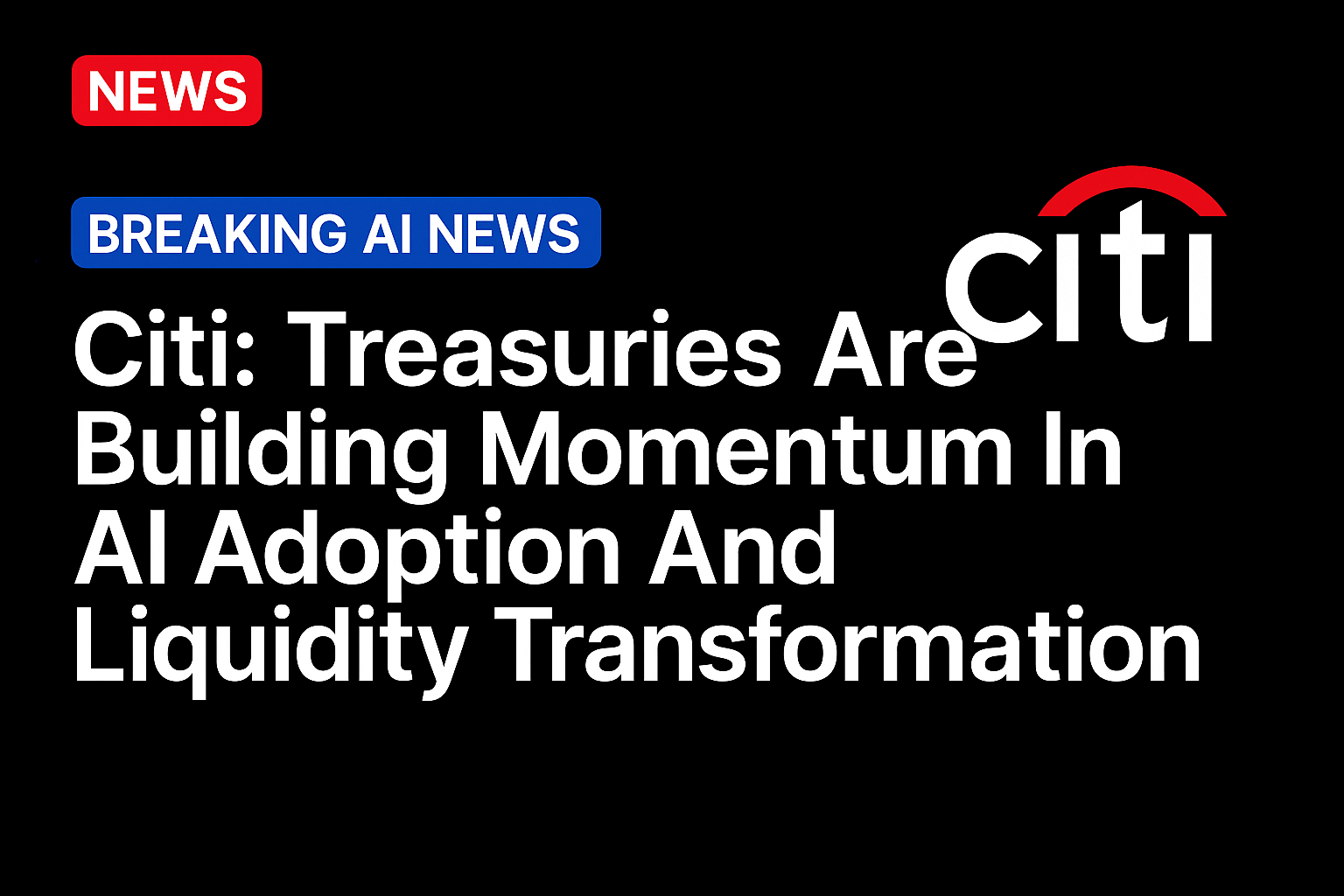
Corporate treasuries are entering a new era. In this era, artificial intelligence (AI) is beginning to underpin daily decisions, forecast cash positions, and optimize liquidity. A recent Citi report found that 82% of treasury teams are still in the early stages of experimenting with generative AI. Only 3% have scaled adoption across their operations. Yet the same study predicts that by 2030, AI will evolve into “the new treasury operating system.” It will transform the function from a control center into an intelligent financial hub.
“The potential productivity gains from AI are too significant to ignore,” said Ron Chakravarti, Citi’s Global Head of Client Advisory Group. “Generative AI is the getting-things-done tool for treasury.” The report outlines a four-stage maturity model. This model starts with identification of use cases and progresses through exploration, transformation, and optimization. Each stage demands measurable results, structured data, and continuous human oversight.
Citi’s Findings Grounded in a Global Survey
Citi’s findings are grounded in a global survey of 75 corporate treasuries across industries and regions. While most respondents remain in pilot mode, the direction is clear. Nearly 60% of treasurers report identifying at least one practical Gen AI use case. Meanwhile, 40% plan to increase investment within the next two years. The most common applications include liquidity forecasting, reconciliation, and report generation. A smaller number are testing Gen AI for variance analysis and narrative creation in management reports.
Data quality remains the single biggest barrier. More than 70% of respondents cited fragmented or incomplete data as a major constraint. The report recommends building a centralized data lake, establishing API connections to enterprise resource planning systems, and defining ownership for data accuracy. Without those foundations, Citi warns, “AI will only replicate human errors at greater speed.”
“Treasury is the ultimate guardian,” said Joseph Neu, Founder and CEO of NeuGroup. In the report, he further added, “There must be 100% trust in the numbers. Generative AI has been slow to deliver at this level of trust.” Citi links this skepticism to a broader cultural challenge. While AI can improve speed and precision, the report argues that its credibility depends on governance, explainability, and clear audit trails.
That call for transparency is echoed by treasurers themselves. “As a first step, we invested time to train the treasury team and trigger a change mindset,” said Alexander Reijrink, Global Head of Corporate Finance and Risk Management at Philips, on how they are triggering change. “This helps us in finding the most valuable use cases, wherever they come up,” he mentioned. Citi frames such efforts as essential to building the human readiness needed for successful AI adoption.
Building Toward AI-Driven Treasury Systems
The transformation Citi envisions is already visible across parts of the financial ecosystem. As PYMNTS has reported, treasury teams are starting to move away from manual spreadsheets. They are shifting toward platforms powered by predictive analytics and data intelligence. Bank of America’s CashPro, for example, gives treasurers real-time visibility into global cash positions and forecasts. This illustrates how structured data enables faster and more confident decisions.
At the same time, experiments with agentic AI are testing the boundaries of automation. PYMNTS recently highlighted how some firms are building systems that can recommend or execute internal transfers. These systems maintain human review and full traceability. These prototypes resemble what Citi describes as the “transformation” stage of AI maturity, where models assist but do not yet act independently.
Citi’s own Treasury and Trade Solutions group is applying these ideas to real transactions. In its most recent quarterly update, the bank shared that it is extending tokenization and programmable money capabilities to corporate clients. This enables instant cross-border liquidity and more automated cash management. These developments align with the report’s architectural vision for treasuries: connected through APIs, governed by data standards, and designed for continuous, real-time operation.
Expanding the Strategic Role of Treasury
The shift is not just technical. As PYMNTS noted in a separate analysis, treasury’s role is expanding as AI and cyber risk converge. Treasurers are becoming strategic participants in enterprise planning, overseeing not only liquidity but also payments infrastructure, data quality, and digital resilience. Citi’s findings support this evolution, observing that treasurers who collaborate with technology and data teams early are better positioned to move from experimentation to transformation.
While the direction is positive, caution remains warranted. Citi stresses that full AI deployment in treasury should proceed in phases, anchored by human validation and measurable outcomes. Its report notes that 61% of surveyed treasurers prefer to start with small pilots that demonstrate quick wins before scaling. The authors warn that premature automation without oversight could erode credibility rather than enhance it.
Source: https://www.pymnts.com/




